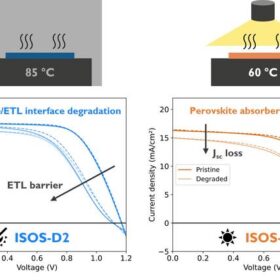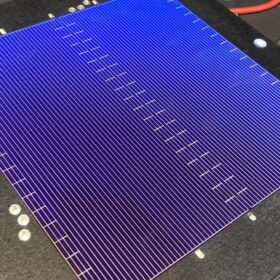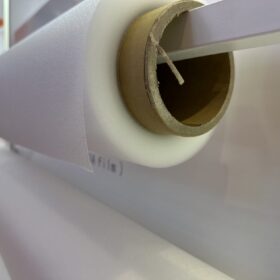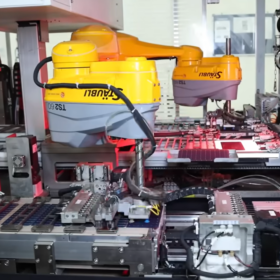France’s Sunology introduces modular residential battery
The system plugs into either a standard power outlet or the main electrical panel and automatically captures surplus solar energy – whether generated by rooftop panels or a portable plug‑and‑play kit. Up to four modules, each with a capacity of 2,200 Wh and 500 W of output, can be combined, and the system comes with a 7,500-cycle warranty for long-term reliability.
NREL researchers warn of unexpectedly high UV-induced degradation in n-type solar modules
A research team from the U.S. National Renewable Energy Laboratory has analyzed n-type modules deployed in a 3 MW commercial PV project in an effort to assess the high degradation rate reported by the plant owner. The scientists found that ultraviolet-induced degradation (UVID) was a major factor affecting the facility’s performance.
Sunshine at your doorstep: Making solar a household staple in India
India’s rooftop solar potential is vast. Policy momentum, domestic manufacturing expansion, and innovative retail models are laying the groundwork for mass adoption. The focus now must be on making solar a simple, dependable household choice — where purchasing panels is as straightforward as buying a home appliance.
Uttar Pradesh launches 1.5 GWh battery storage tender
Uttar Pradesh Power Corp. Ltd. (UPPCL) has launched a tender for the selection of developers to supply energy from 1,500 MWh (375 MW x 4 hours) of standalone battery energy storage systems (BESS) in the state of Uttar Pradesh, on an on-demand basis.
Saatvik Green Energy’s INR 900-crore IPO to open this week
Saatvik Green Energy Ltd has announced the launch of its initial public offering (IPO), aiming to raise INR 900 crore. The offer comprises a fresh issue of equity shares aggregating up to INR 700 crore and an offer for sale (OFS) aggregating up to INR 200 crore by the promoters.
Researchers identify main source of wide-bandgap solar perovskite degradation
Scientists in Belgium have investigated how perovskite absorbers used in solar cell degrade under three different stress test types and have found that the interface between the perovskite layer and the electron transport layer suffers from weak thermomechanical stability, which creates the conditions for performance losses.
MNRE proposes ALMM for solar wafers
The Ministry of New and Renewable Energy (MNRE) has proposed the inclusion of solar wafers under the Approved List of Models and Manufacturers (ALMM), in a move aimed at promoting domestic manufacturing across the entire solar cell value chain. The ALMM for solar wafers will come into effect on June 1, 2028.
Encapsulant delamination behavior in PV glass recycling
Researchers in Spain investigated effective separation of encapsulants from PV glass with a focus on melting behavior and resistance to the hot knife-method of delamination. The results indicated that thermoplastic polyolefin encapsulants were the easiest to remove from the PV glass.
Improving TOPCon solar cell performance with rear treatment techniques
Researchers in China have investigated four strategies that minimize TOPCon solar cell surface recombination centers and improve light trapping performance. They identified alkali polishing with micro-texturing as the most suitable technique to improve TOPCon cell open-circuit voltage and fill factor and the overall device performance.
Polycab launches 350kW three-phase string inverter for utility-scale solar projects
Polycab has launched its UT Series 350kW three-phase string inverter for utility-scale solar projects in Tamil Nadu. Offering 15/12 MPPTs, this series comes with a maximum 15A/20A DC input current per string, thus supporting bifacial 182mm/210mm modules.















